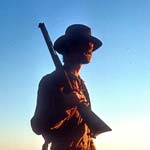-
Fire Danger is HIGH in the Parks - Observe Current Fire Restrictions
On Saturday, July 14, 2012, fire restrictions began and will continue until further notice. Follow link to read the full news release for info on wood, BBQ, & propane fires, and smoking in campgrounds, picnic, & wilderness areas below 6,000 ft. More »
-
Road Construction Delays in Sequoia NP thru end of November 2012 (if entering/exiting Hwy 198)
Expect 20-minute to 1-hour delays on weekdays and 20-minute delays on weekends along main road through parks. Weeknight closures with one pass through the construction zone at 11:30 p.m. See link to schedule and map or call 559-565-3341 (press 1, 1, 1,). More »
-
22-foot Vehicle Length Limit in Sequoia NP thru end of November 2012 (if entering/exiting Hwy 198)
Planning to see the "Big Trees" in Sequoia National Park? If you enter/exit via Hwy. 198, all vehicles must be less than 22 feet in length. Even vehicles towing trailers must be less than 22 feet in combined length. Longer vehicles must enter at Hwy. 180. More »
History & Culture
|
Please read important park alerts by clicking the red tab above before you come to the parks. In the late 1700s and early 1800s, Spanish agents began exploring the edge of the Sierra Nevada Range. Within 50 years or so, trappers, sheepherders, miners, and loggers poured into the Sierra seeking to use the mountains' resources. By the end of the 19th century, San Joaquin Valley communities increasingly looked to the Sierra for water and recreation. In the struggle between all these competing interests, two national parks were born that became known as Sequoia and Kings Canyon National Parks. Today, the parks together protect well over 500 Native American archeological sites and over 100 historic sites. The number of recorded sites grows each year because of project surveys. For more on how and where national parks preserve history and culture, click here. |

Historically, the Native Americans who lived in or used the area of the parks, included groups known today as the Western Mono (or Monache), the Foothills Yokuts, and the Tubatulabal. Each of these three major groups had a distinctive language, based on their relationships with related groups from interior California(Yokuts), the Great Basin, (Mono), or the Great Basin/Mojave country (Tubatulabal). Yet, to varying degrees, all of these groups interacted with each other; many tribal members were thus multi-lingual. more... 
Like many other disenchanted miners, Hale Tharp sought another way to make a living. By the mid-1850s, he apparently decided to focus on raising cattle as a way to provide supplies to the immigrants pouring into the Sierra. He wandered south in search of open land. In the broad, open canyon where the Kaweah River leaves the Sierra, Tharp found what he was seeking. more... 
The full story of one week in 1890, when the Giant Forest was added to Sequoia National Park and the precursor to Kings Canyon sprang into existence, may never be known. Through clever legislation, some unidentified agents grew the two parks that now protect nearly half the remaining sequoia groves in the world. more... |
Did You Know?

Dogs are not permitted on any park trails or on the summer shuttle, except service dogs. This allows for more frequent wildlife sightings, ensures that other visitors and wildlife will not be annoyed or frightened by dogs, and saves cleanup on trails. You can take dogs on leashes on US Forest Service trails.
